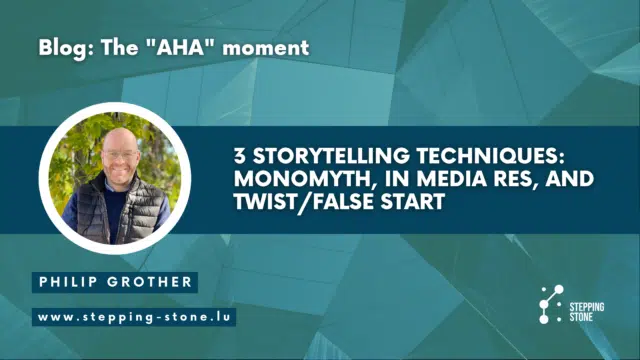Storytelling is a powerful tool that can help you engage your audience and convey your message in a more compelling way. Whether you are writing a blog post, creating a video, or giving a presentation, using the right storytelling techniques can make all the difference. In this article, we will explore three storytelling techniques that can help you captivate your audience and keep them engaged: monomyth, in media res, and twist/false start.
Monomyth
The monomyth, also known as the hero’s journey, is a storytelling structure that has been used for centuries to tell compelling stories. The hero’s journey consists of five key elements: hero, problem, challenge, change/transformation, and resolution.
- Hero: The hero is the main character of the story, who sets out on a journey to overcome a problem or challenge.
- Problem: The problem is the obstacle or challenge that the hero must overcome. It could be an external problem, such as a dragon that needs to be defeated, or an internal problem, such as a lack of confidence or self-doubt.
- Challenge: The challenge is the action that the hero takes to overcome the problem. It could be a physical challenge, such as a battle, or a mental challenge, such as solving a puzzle or riddle.
- Change/Transformation: The hero’s journey is not just about overcoming a problem, but also about undergoing a transformation. The hero learns and grows as a result of the journey, becoming a better and more confident person in the process.
- Resolution: The resolution is the final outcome of the hero’s journey. It could be a victory, such as defeating the dragon, or a personal accomplishment, such as overcoming self-doubt.
In Media Res
In media res is a storytelling technique that literally means “in the middle of things.” It involves starting a story in the middle of the action, and then going back to the beginning to provide context and background information.
By starting in the middle of the action, you can immediately engage your audience and draw them into the story. They will be curious to know what led up to the current situation and will be eager to find out what happens next.
Once you have grabbed your audience’s attention, you can then go back and provide the necessary context and background information. This helps to establish the stakes and give your audience a better understanding of the story.
Twist/False Start
A twist or false start is a storytelling technique that involves setting up your audience in one direction, and then suddenly changing direction. It could be a plot twist, such as revealing that the villain was actually the hero’s trusted ally, or a false start, such as introducing a character who seems to be the main protagonist, only to reveal that they are not the true hero of the story.
Using a twist or false start can be a great way to keep your audience engaged and on their toes. It helps to keep them guessing and ensures that they are fully invested in the story.
In conclusion, monomyth, in media res, and twist/false start are all powerful storytelling techniques that can help you engage your audience and keep them captivated. By using these techniques, you can craft a more compelling and memorable story that will leave a lasting impression on your audience.


